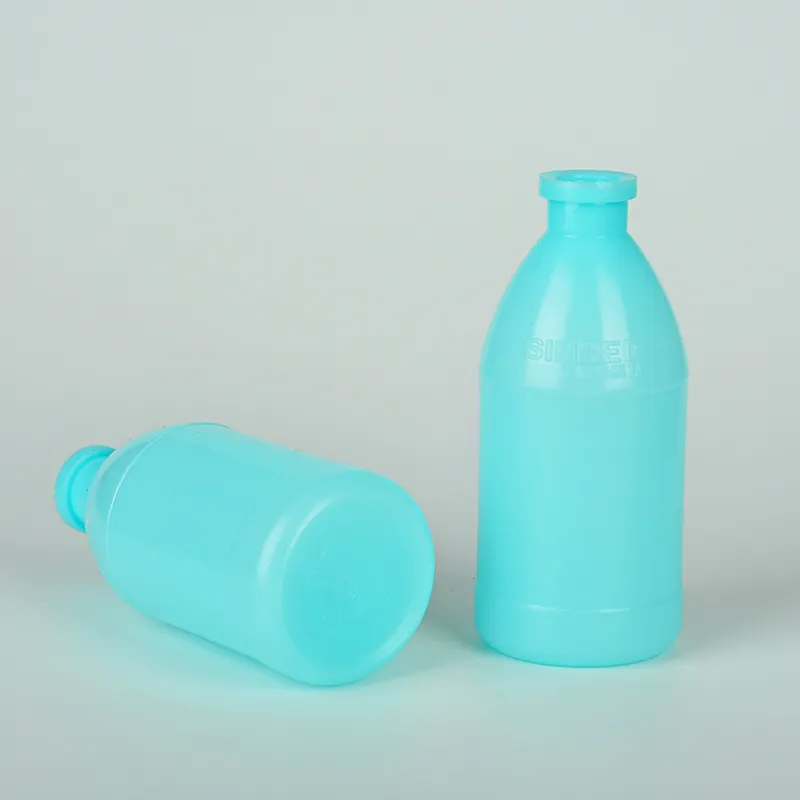plastic beverage bottle
The Environmental Impact of Plastic Beverage Bottles
In today's fast-paced world, convenience often reigns supreme, and plastic beverage bottles have become a ubiquitous symbol of modern living. From soft drinks to bottled water, these lightweight containers are everywhere, providing a quick and portable way to hydrate. However, the environmental impact of plastic beverage bottles is profound and far-reaching, prompting an urgent need for awareness and action.
Every year, millions of plastic bottles are produced and consumed globally. According to estimates, around 1 million plastic bottles are purchased every minute. While they offer convenience, these bottles contribute significantly to the growing crisis of plastic waste. A staggering proportion of these bottles end up in landfills or, worse, in our oceans, where they take hundreds of years to decompose. Marine life is particularly vulnerable; sea turtles often mistake plastic bags for jellyfish, while seabirds frequently ingest plastic fragments, mistaking them for food.
The journey of a plastic bottle begins with its production, which typically involves the extraction of petroleum, a non-renewable resource. The manufacturing process itself is energy-intensive and releases harmful greenhouse gases into the atmosphere. Once produced, the bottles may only be used for a short period before being discarded, representing a classic case of single-use plastic. According to the Environmental Protection Agency (EPA), only about 29% of plastic bottles are recycled in the United States, highlighting the need for improved waste management and recycling programs.
Recycling is often touted as the solution to the plastic problem. However, the reality is more complex. Many recycling facilities lack the capacity to handle the volume of plastic they receive, and contamination—when non-recyclable materials end up mixed with recyclables—presents a significant challenge. As a result, a considerable portion of what we think is recyclable may ultimately end up in landfills.
plastic beverage bottle

Additionally, the recycling process itself can be flawed. Many plastic bottles are made from PET (polyethylene terephthalate), which is technically recyclable. However, the quality of recycled PET (rPET) can degrade over time, limiting its reusability. This leads manufacturers to rely on virgin plastic for new bottles, perpetuating the cycle of plastic consumption and waste.
To combat the environmental crisis posed by plastic beverage bottles, individuals, governments, and corporations must take action. One effective strategy is to promote reusable alternatives. By encouraging consumers to switch to stainless steel or glass bottles, we can significantly reduce demand for single-use plastics. Initiatives such as providing refill stations in public spaces and creating awareness campaigns about the importance of reducing plastic consumption can also contribute to changing consumer behavior.
Legislative measures play a crucial role as well. Some countries and regions have implemented bans on single-use plastic bottles or have introduced fees to discourage their use. These regulations can motivate consumers to seek sustainable options and encourage businesses to innovate in producing eco-friendly alternatives.
In conclusion, while plastic beverage bottles are a convenient solution for hydration, their environmental consequences are severe. Addressing the issue requires a collective effort from individuals, businesses, and governments alike. By embracing sustainable practices, promoting reusable products, and supporting policies aimed at reducing plastic waste, we can take significant steps toward a cleaner, healthier planet. The time to act is now—our environment depends on it.
-
Aesthetic Makeup Spray Bottles | Fine Mist Empty RefillableNewsAug.19,2025
-
White Plastic Veterinary Vaccine Vials | Lab Liquid BottlesNewsAug.18,2025
-
Plastic Medicine Liquid Bottle: Secure Flip Top Drug VialsNewsAug.17,2025
-
Durable 250ml Blue Plastic Vaccine Vial for Lab & Vet UseNewsAug.16,2025
-
Sterile Virus Sample Tubes: Secure & Reliable Specimen CollectionNewsAug.15,2025
-
White 250ml Plastic Vaccine Vial for Lab & Vet MedicineNewsAug.14,2025
























